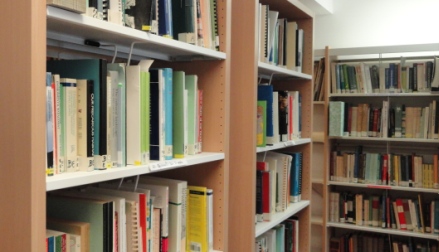| Titre : |
Growth of Dactylis glomerata L. and Bromus erectus Huds. in natural habitats and along light and water gradients |
| Type de document : |
communication Ć congrĆØs |
| Auteurs : |
Jacques Roy, Auteur |
| AnnƩe de publication : |
1984 |
| Importance : |
pp. 167-172 |
| ISBN/ISSN/EAN : |
COM42486 |
| Note gƩnƩrale : |
ISBN-10 : 90-6193-953-4; ISBN-13 : 978-94-009-6580-5; Proceedings of International symposium adaptations terrestrial environment held in Halkidiki, Greece, 1982. Margaris, N.S., Arianoustou-Faraggitaki, M., Oechel, W.C. (Eds). Being alive on land. The Hague : Dr W. Junk (Tasks for vegetation science; 13), pp.167-172; Congrès disponible à la bibliothèque du CEFE à la cote 38576/16; DOI : 10.1007/978-94-009-6578-2_18 |
| Langues : |
Anglais (eng) |
| Mots-clƩs : |
BROMUS BROMUS ERECTUS Croissance DACTYLIS GLOMERATA GRADIENT Habitat LUMIERE |
| RƩsumƩ : |
Le site Ć©diteur indique : In the Northern part of the French Mediterranean region, Bromus erectus is the dominant species of the herbaceous strata under Quercus pubescens canopies while Dactylils glomerata is found mainly in open swards corresponding to early stages of succession. Growth of the two grasses was studied in natural open and under canopy swards to determine how it is affected by the different habitats. Growth was also analysed along light and water experimental gradients test if a differential response of the two species to light and water could explain their ecological distribution.
In spite of the light reduction under the oak canopy (35 and 75% of the incident light with and without leaves respectively), wood and sward individuals had similar aerial biomass except in summer when the canopy improves water status and increases growth. Despite this similarity in aerial biomass, there were differences between the two species in tiller number, leaf number per tiller, and leaf surface area.
Compared to D. glomerata, B. erectus was less affected by light reduction (partially explaining their respective ecological distribution) and also by an increase in water stress. Ecotypic differentiations were found between wood and sward populations in both species but plasticity appeared to be the main factor that allows these species to grow in the two studied habitats. |
| En ligne : |
https://doi.org/10.1007/978-94-009-6578-2_18 |
Growth of Dactylis glomerata L. and Bromus erectus Huds. in natural habitats and along light and water gradients [communication Ć congrĆØs] / Jacques Roy, Auteur . - 1984 . - pp. 167-172. ISSN : COM42486 ISBN-10 : 90-6193-953-4; ISBN-13 : 978-94-009-6580-5; Proceedings of International symposium adaptations terrestrial environment held in Halkidiki, Greece, 1982. Margaris, N.S., Arianoustou-Faraggitaki, M., Oechel, W.C. (Eds). Being alive on land. The Hague : Dr W. Junk (Tasks for vegetation science; 13), pp.167-172; Congrès disponible à la bibliothèque du CEFE à la cote 38576/16; DOI : 10.1007/978-94-009-6578-2_18 Langues : Anglais ( eng)
| Mots-clƩs : |
BROMUS BROMUS ERECTUS Croissance DACTYLIS GLOMERATA GRADIENT Habitat LUMIERE |
| RƩsumƩ : |
Le site Ć©diteur indique : In the Northern part of the French Mediterranean region, Bromus erectus is the dominant species of the herbaceous strata under Quercus pubescens canopies while Dactylils glomerata is found mainly in open swards corresponding to early stages of succession. Growth of the two grasses was studied in natural open and under canopy swards to determine how it is affected by the different habitats. Growth was also analysed along light and water experimental gradients test if a differential response of the two species to light and water could explain their ecological distribution.
In spite of the light reduction under the oak canopy (35 and 75% of the incident light with and without leaves respectively), wood and sward individuals had similar aerial biomass except in summer when the canopy improves water status and increases growth. Despite this similarity in aerial biomass, there were differences between the two species in tiller number, leaf number per tiller, and leaf surface area.
Compared to D. glomerata, B. erectus was less affected by light reduction (partially explaining their respective ecological distribution) and also by an increase in water stress. Ecotypic differentiations were found between wood and sward populations in both species but plasticity appeared to be the main factor that allows these species to grow in the two studied habitats. |
| En ligne : |
https://doi.org/10.1007/978-94-009-6578-2_18 |
|  |



